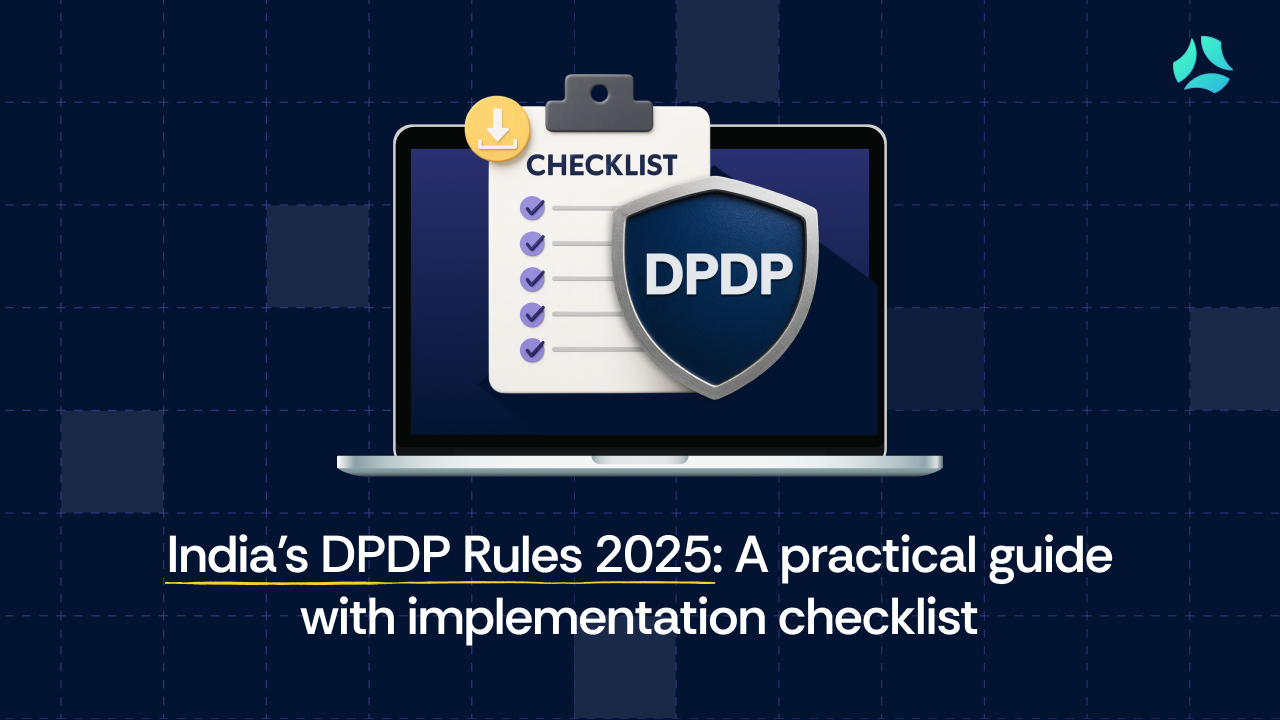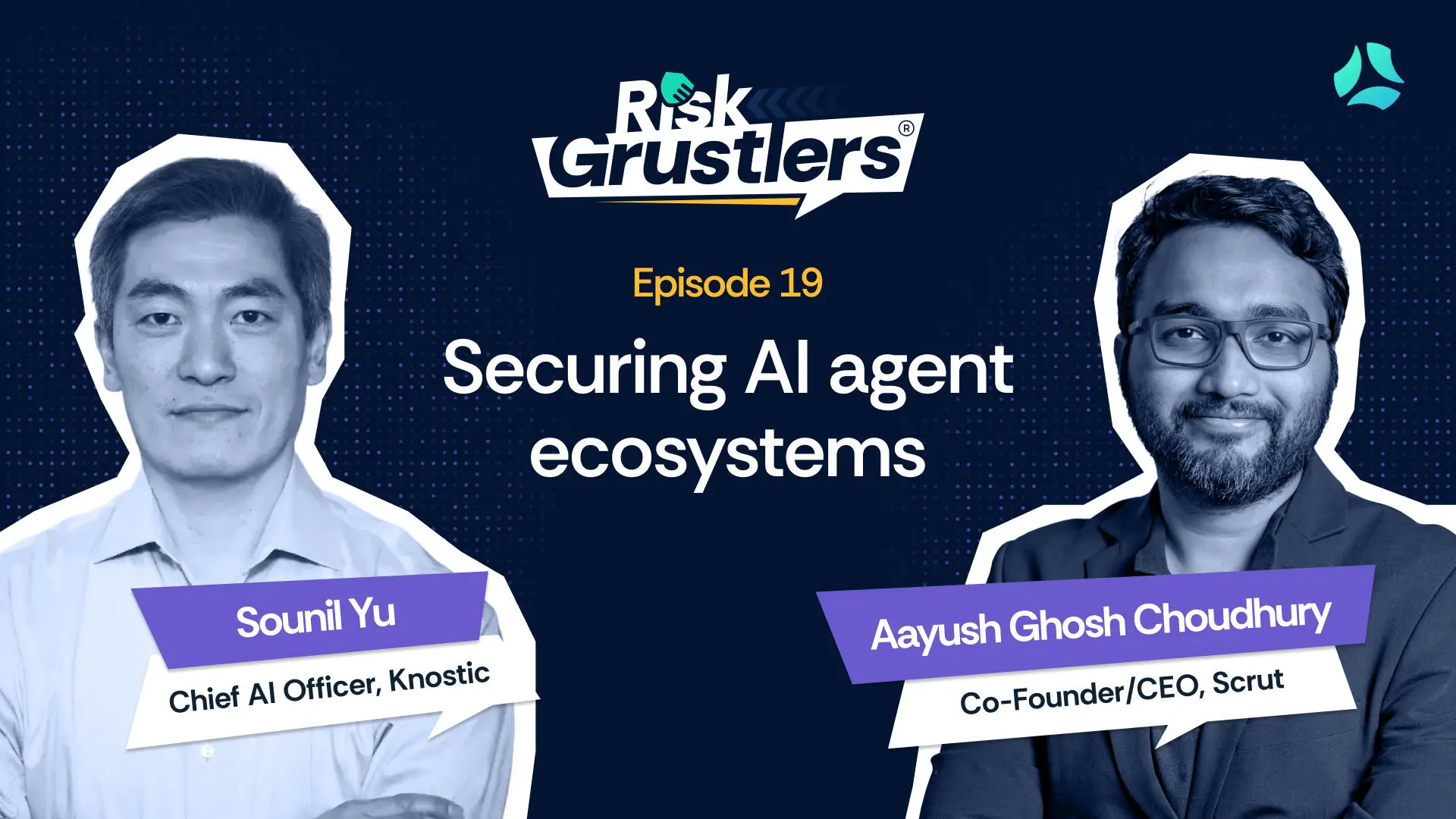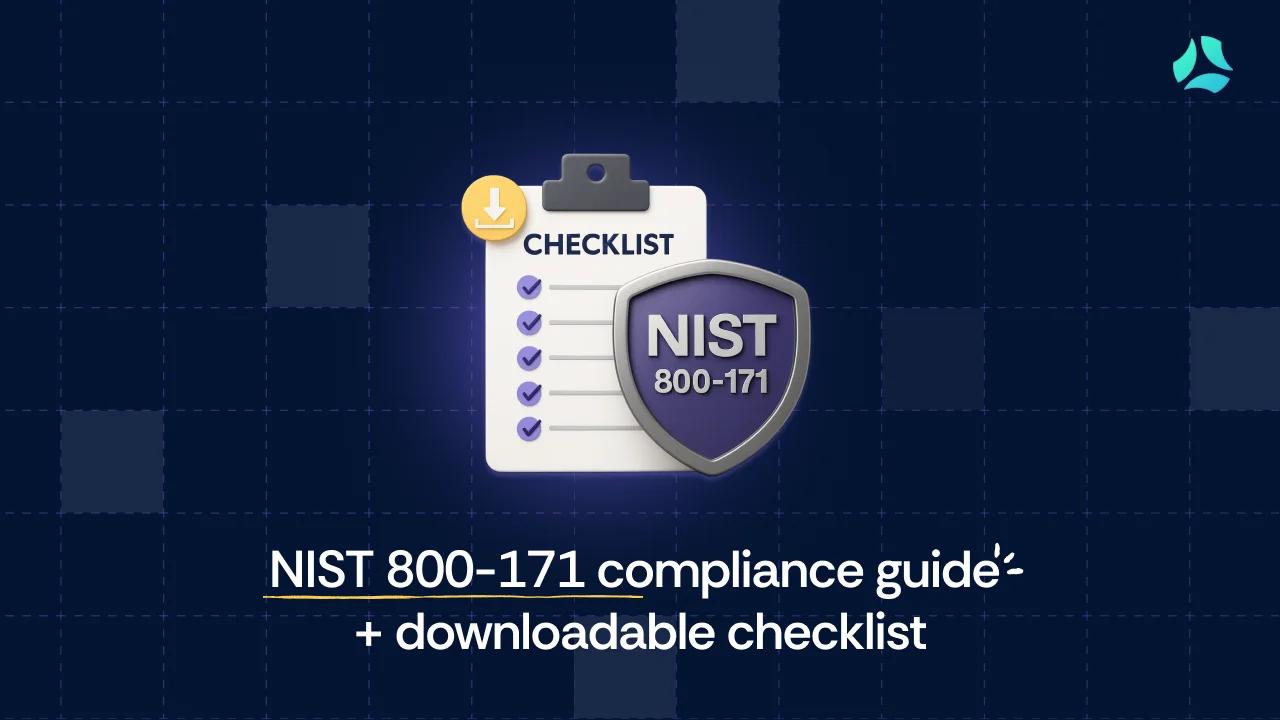Calculating your actual PCI compliance cost: Expert guide for 2025

Achieving PCI DSS compliance is a crucial yet often complex process for businesses handling card transactions. The cost of compliance, however, varies widely based on your business size, transaction volume, and security requirements.
Without a clear understanding of these costs, businesses risk underestimating their budget requirements, which can have serious consequences. For instance, if a company fails to budget for regular vulnerability scans or penetration testing (which are typically performed by third-party vendors or require specialized internal teams, both of which incur costs), they might miss critical security weaknesses, such as outdated software or misconfigured systems.
These gaps can lead to costly data breaches, fines for non-compliance, and severe damage to the company’s reputation.
In this guide, we break down the key cost components of PCI DSS—from initial assessments to annual maintenance—so you can estimate what compliance will cost your business and avoid the risks of non-compliance.
A quick overview of PCI DSS compliance cost
How much does PCI DSS compliance cost?
PCI compliance costs vary greatly based on business size and transaction volume. Companies need to understand these costs to effectively budget and maintain the security of cardholder data.
1. Small business (Level 4)
Small businesses processing fewer than 20,000 e-commerce transactions annually can meet PCI DSS compliance through the SAQ without requiring external audits.
Cost range: $1,000 to $10,000 annually
Key cost elements:
- SAQ: Costs may arise from tools or third-party consultants that help complete the SAQ accurately and ensure all security controls are in place.
Vulnerability scans (if required): Depending on your SAQ type (e.g., A-EP or D), you may need quarterly scans by an Approved Scanning Vendor (ASV) to detect vulnerabilities in internet-facing systems. - Employee training: Ensures staff understand cybersecurity best practices, reducing human error risks.
- Remediation efforts: Address security gaps found during the self-assessment or scans, such as patching vulnerabilities or strengthening authentication controls.
2. Mid-sized business (Level 2-3)
Businesses processing between 20,000 and six million transactions annually need a combination of SAQ validation and additional security testing, such as penetration testing, to ensure compliance. Depending on the card brand rules and risk level, they may be required to complete a Report on Compliance (RoC) through a Qualified Security Assessor (QSA).
Cost range: $10,000 to $50,000 annually
Key cost elements:
- Compliance support costs: Businesses may require help from external consultants or tools to manage SAQs.
- Regular vulnerability scans: Identifies security weaknesses before they can be exploited.
- Penetration testing: Simulates cyberattacks to assess security effectiveness, often conducted annually or after significant changes to infrastructure.
- Security policy development: Ensures documented procedures for handling sensitive cardholder data.
- Employee training: More extensive training programs, including phishing awareness and secure coding practices for technical staff.
3. Large enterprises (Level 1)
Enterprises processing over six million transactions annually require a whole ROC through an onsite assessment by a QSA.
Cost range: $50,000 to $250,000+ annually
Key cost elements:
- Annual onsite assessments by QSAs: External auditors evaluate compliance across all systems, requiring detailed documentation, interviews, network reviews, and control testing.
- Comprehensive vulnerability scans: Quarterly vulnerability scans are required by PCI DSS and performed by an ASV. Conducted more frequently, often monthly, to detect evolving threats.
- Penetration testing: Extensive testing to simulate real-world attacks on networks, applications, and internal environments.
- Training programs: Role-based training across departments — from general awareness for all staff to secure coding and incident response for technical teams.
- Policy development & governance: Ensuring adherence to PCI DSS controls through structured policies and procedures.
- Remediation efforts: Significant investment in fixing identified security gaps, which may involve upgrading infrastructure, implementing multi-factor authentication (MFA), or improving encryption methods.
The compliance burden increases with transaction volume; however, investing in security early can help reduce risks and prevent costly breaches.
Detailed breakdown of PCI DSS certification cost
PCI DSS compliance costs vary significantly across different security requirements. Let’s get into each expense category that organizations need to budget for.
1. Scope assessment ($5,000–$15,000)
Start by defining the boundaries of your PCI DSS environment. This phase requires you to:
- Conduct a detailed inventory of all systems that store, process, or transmit cardholder data. For example, list each server running payment applications, workstations that access card data, and databases containing payment information.
- Review existing network diagrams to identify how data flows between point-of-sale systems, web applications, and backend servers.
- Document connected devices such as routers, switches, and load balancers that could impact data security.
- Interview IT and security teams to confirm that all endpoints, including wireless access points and remote access solutions, are correctly identified.
2. Gap analysis(expect: $5,000–$20,000)
Evaluate the current security posture against PCI DSS requirements. A thorough gap analysis reveals vulnerabilities in areas such as:
Network security controls: Evaluate how current network security controls (firewalls, intrusion detection systems, and Distributed Denial-of-Service (DDoS) mitigations) match PCI DSS mandates.
Data encryption: Check that all stored payment data uses approved encryption methods (e.g., AES 256-bit) and that encryption keys are securely managed (using hardware security modules [HSMs] or dedicated software).
Antivirus and antimalware software: Confirm that antivirus, antimalware, and malware detection software (such as Norton or Kaspersky) is installed on every system handling cardholder data, with scheduled scans and automatic updates.
Security documentation: Review security documentation, including procedures and training programs, to ensure they meet the detailed PCI DSS standards.
3. Remediation efforts ($10,000 to $100,000+)
This involves fixing non-compliance issues by upgrading or replacing outdated systems. This phase includes:
- Upgrading security infrastructure:
- Replace old firewall equipment with current models and adjust rule sets to restrict unnecessary open ports.
- Upgrade or reconfigure intrusion detection systems to improve monitoring and alert accuracy.
- Implement or update DDoS mitigation solutions to handle current traffic patterns and block malicious requests.
- Create logical or physical boundaries between cardholder data systems and other parts of the network to reduce scope and limit risk.
- Improving data security:
- Implement or upgrade encryption on stored cardholder data using strong encryption, such as AES-256 based on your risk tolerance and industry standards.
- Set up secure key management systems, such as HSMs or approved key management software, to control access to encryption keys.
- Install or upgrade malware detection tools (antivirus/EDR) across systems in scope.
- Schedule regular scans and ensure signature updates are automated.
- Strengthening authentication:
- Ensure your employees use strong passwords and reinforce them with multi-factor authentication (MFA), such as hardware tokens or mobile verification systems.
- Establish a process to maintain detailed logs for audit and compliance purposes.
- Log management:
- Set up centralized logging and retention to support monitoring, incident response, and audit readiness.
- Set up centralized logging and retention to support monitoring, incident response, and audit readiness.
4. Assessment by a QSA ($30,000 – $100,000+)
For Level 1 merchants, an official assessment by a QSA is required. A QSA reviews remediation efforts to ensure all PCI DSS standards are met. This independent assessment confirms compliance, and you will be issued a Report on Compliance (RoC) or Attestation of Compliance (AoC) after a successful QSA assessment.
During this assessment, the QSA will:
- Review your documented system configurations, such as firewall settings (e.g., specific port configurations, rule sets) and intrusion detection/prevention system logs.
- Examine the encryption methods in use—for instance, verifying that stored cardholder data uses AES encryption and that data in transit utilizes TLS 1.2 or higher.
- Verify that antivirus software is installed and up to date on all required devices, including checking logs to confirm regular scans and timely updates.
- Validate the network segmentation and effectively isolate cardholder data environments.
- Compare your remediation efforts against the PCI DSS requirements to pinpoint any deviations.
5. Penetration testing & vulnerability scans ($5,000 – $20,000)
Conduct regular vulnerability scans and penetration tests to expose potential security weaknesses. This phase includes:
- Quarterly vulnerability scans:
- Engage Approved Scanning Vendors (ASVs) to scan your internet-facing systems, such as web servers and payment gateways, for vulnerabilities like unpatched software, open ports, and exposed services.
- Conduct internal vulnerability assessments to evaluate network devices and endpoints for potential exposures, including outdated operating systems, missing security patches, and weak encryption settings.
- Penetration testing:
- Simulate real-world attacks on systems and network infrastructure to expose security gaps that automated scans may miss.
- PCI DSS v4.0 also recommends that companies carry out penetration testing at least once every 12 months and after any significant infrastructure or application changes (such as OS upgrades, subnets added, or firewall rule modifications).
6. Ongoing compliance and monitoring ($5,000 – $30,000)
Maintain continuous PCI DSS compliance by monitoring, providing training, and updating documentation. Activities in this phase include:
- Employee training programs: Train staff who handle cardholder data with initial training upon hiring and follow up with annual refreshers that cover secure practices, threat identification, and incident response. Reinforce security awareness throughout the organization with targeted programs.
- Security policy development: Customize and review ready-made policy packages to address all PCI DSS requirements. Communicate policies clearly to all team members to guarantee consistent application.
- Invest in security tools: Update and maintain essential security tools, such as firewalls, intrusion detection systems, and other monitoring solutions, to strengthen your security posture.
- Maintain thorough documentation: Keep detailed records of compliance activities, including scan results, policy changes, and security updates to demonstrate ongoing adherence and support audits.
Hidden or indirect costs to watch for
Businesses often underestimate the hidden expenses associated with ongoing efforts, such as verifying third-party vendor compliance, staff training, and upgrading outdated systems—all of which are crucial to sustaining long-term compliance and avoiding costly violations. Let’s look at these costs below.
1. Staff time and training
One subtle aspect is that investing in training and dedicating staff time often translates to increased labor expenditures. When IT security teams and system administrators must learn new protocols and procedures, such as advanced encryption techniques and updated access controls, the organization may incur expenses related to overtime, reduced productivity during training sessions, and even temporary staffing to cover critical operations.
2. Third-party vendor audits
When you engage with external vendors who host your payment platform, manage your firewalls, or provide customer support that accesses card info, it means they fall under the scope of PCI DSS. You must review each vendor’s Attestation of Compliance (AoC), and perform additional assessments to confirm adherence. So, the effort required to assess vendor compliance, maintain documentation, and conduct continuous risk assessments can introduce extra costs for the organization.
3. Technology upgrades
Another indirect influence is the need for technology upgrades. Modernizing your technical infrastructure to align with PCI DSS standards often necessitates investing in new hardware or software when existing systems fall short in supporting updated security features—such as enhanced encryption, access control mechanisms, or comprehensive log monitoring. These upgrades also involve additional costs for implementation, integration, and ongoing maintenance.
4. Documentation and policy updates
Another subtle yet impactful aspect is the continuous effort required to maintain and update documentation and policies. Systematically reviewing, revising, and managing policies—from incident response to data retention—often calls for specialized tools or additional personnel. This ongoing process, while essential for demonstrating compliance during audits, can lead to increased administrative labor and system management efforts.
How does Scrut simplify PCI DSS compliance?
Scrut simplifies achieving and maintaining PCI DSS compliance and 50+ other frameworks by automating continuous monitoring, policy management, risk management, and several different processes. It helps your business stay audit-ready, quickly address compliance gaps, and mitigate security risks. Here’s how you can remain secure and PCI DSS compliant with Scrut:
1. Continuous controls monitoring
Scrut’s Continuous Automated Testing (CAT) module runs scans every 24 hours to detect unfulfilled policies and misconfigured controls. When a compliance gap is identified, Scrut users can enable quick remediation and reduce security risks before they escalate.
2. Pre-configured PCI DSS controls and policies
With a set of pre-configured controls and policies tailored to PCI DSS requirements, Scrut significantly reduces the time and effort needed for implementation. This streamlined approach minimizes the manual configuration of controls and policies for PCI DSS compliance.
3. Risk management and risk mitigation
Scrut offers efficient workflows to identify and populate risks, assess them, and track their mitigation, helping you align with PCI DSS risk management requirements. It automatically compiles risks, scores, mapped controls, and mitigation tasks, simplifying audit readiness. You can also easily create a comprehensive risk register or select risks from its pre-built library to document risks, evaluate impact, and implement mitigation plans.
4. Automated evidence collection
Scrut easily integrates with IT management tools, HR, and ticketing systems to automate evidence collection and ensure audit readiness. This reduces manual effort and ensures audit readiness for frameworks like PCI DSS, ISO 27001, and SOC 2.Ready to ease your compliance burden? Book a demo today and see how Scrut can simplify your PCI DSS audit process.


















